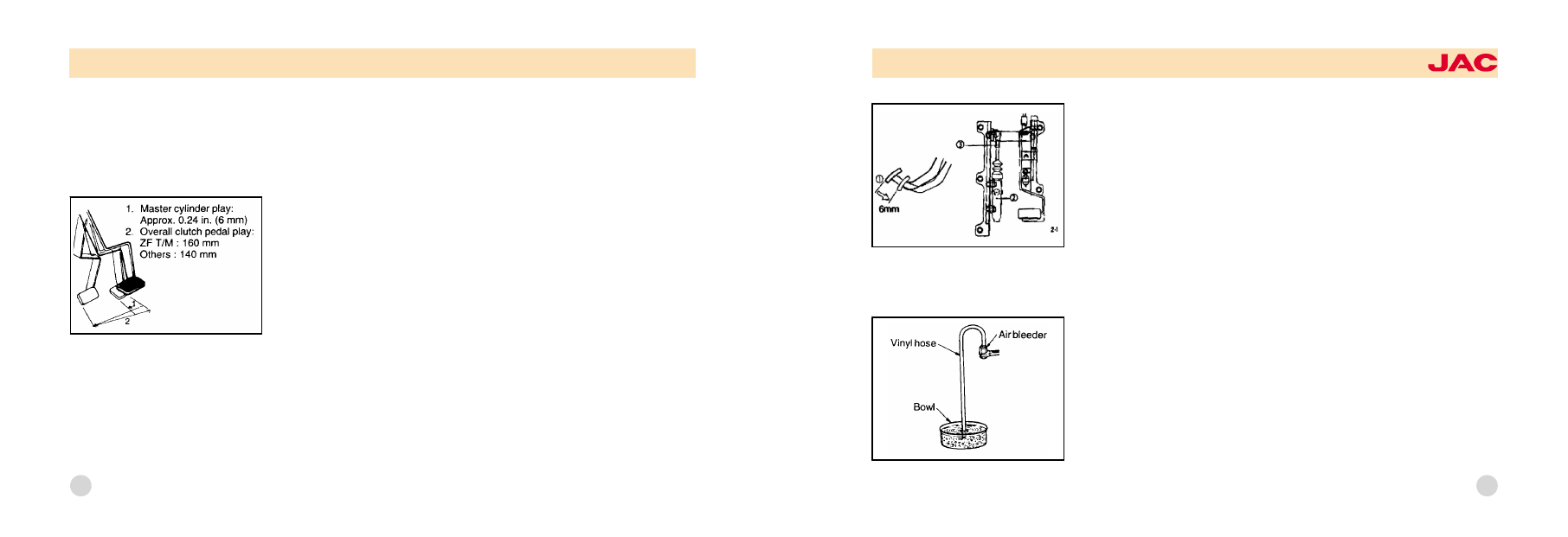Content .. 1220 1221 1222 1223 ..
Isuzu N-Series. Manual - part 1222

151
1) Master cylinder play:
Approx. 0.24 in. (6 mm)
2) Master cylinder
3) Play adjusting nut
NOTE:
If the adjustment cannot be made to this play specification, the clutch disc is
worn down to the service limit. Take the vehicle to your nearest service facility
for correction.
BLEEDING OF CLUTCH PIPING
If there is air in the piping, the clutch will be hard to disengage.
When the fluid reservoir tank has been emptied, be sure that the clutch piping
is bled. Have an assistant in bleeding the piping and proceed as follows:
1. Fill the clutch fluid reservoir tank with brake fluid up to the "MAX" level.
Since the level falls during the bleeding operation, add brake fluid to prevent
emptying the tank.
150
CLUTCH PEDAL PLAY
The clutch pedal play will decrease as the disc wears. If it is not adjusted, the
clutch will slip, making it impossible to operate the vehicle. When the clutch
pedal play has decreased to less than 8.3 in. (210 mm), adjustment is re鄄
quired.
Check the pedal play by depressing the pedal with finger. Depressing the
pedal will make you feel resistance in two stages. The pedal play is the stroke
made by the pedal until it reaches the second stage and is 0.24 to 0.31 in. (6
to 8mm) standard. The play in the first stage is the master cylinder play. In the
second stage, it is the clutch booster push rod play. The play is easier to
check when the compressed air pressure is lower. If it is out of specification,
have it inspected and adjusted or repaired if necessary.
Adjust the clutch master cylinder play, which is the movement of the pedal up
to the first resistance encountered when the pedal is depressed with your fin鄄
ger. Adjust this play to about 6 mm (0.24 in.) by turning the center belt of the
master cylinder push rod. After adjusting, firmly tighten the nut on the center
belt while holding the belt in position with a corench.
OWNER爷S MANUAL
JAC HEAVY DUTY TRUCK